Management CONFLICTS Friday 18 March 2016 Submitted by

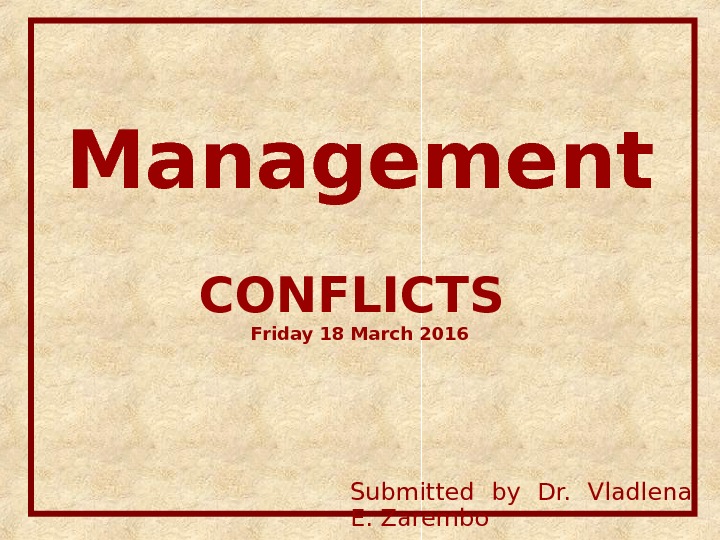

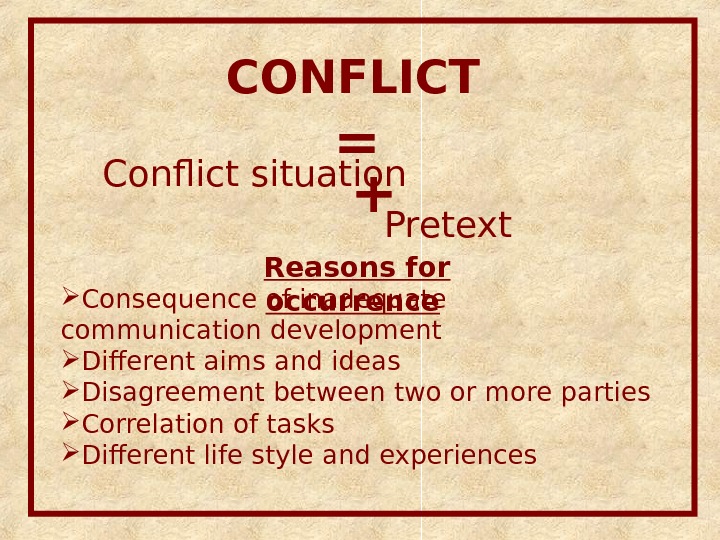

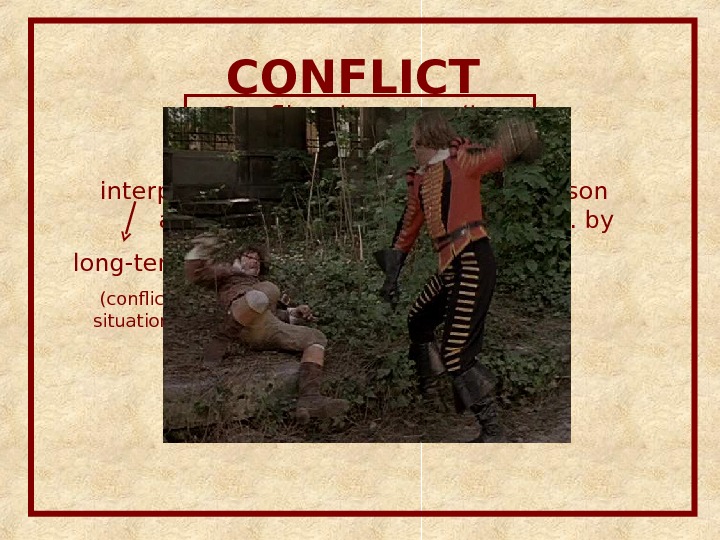
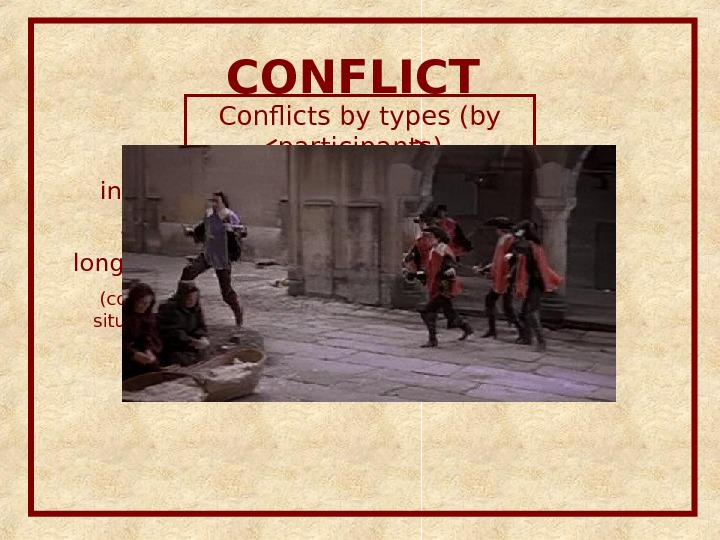
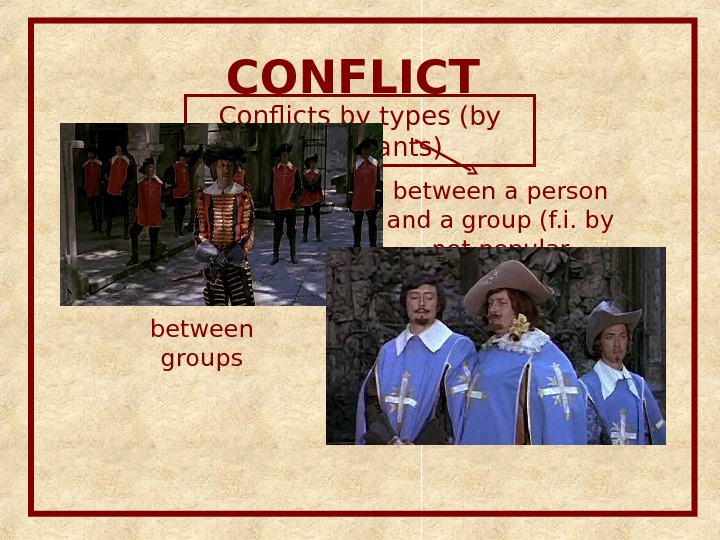
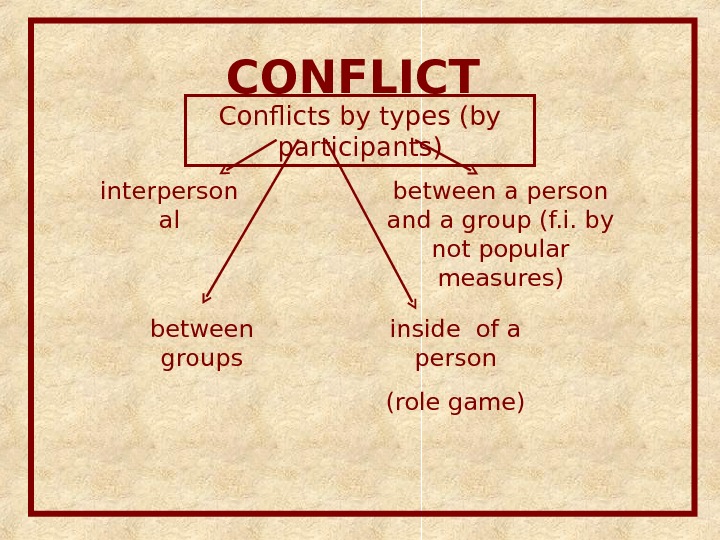

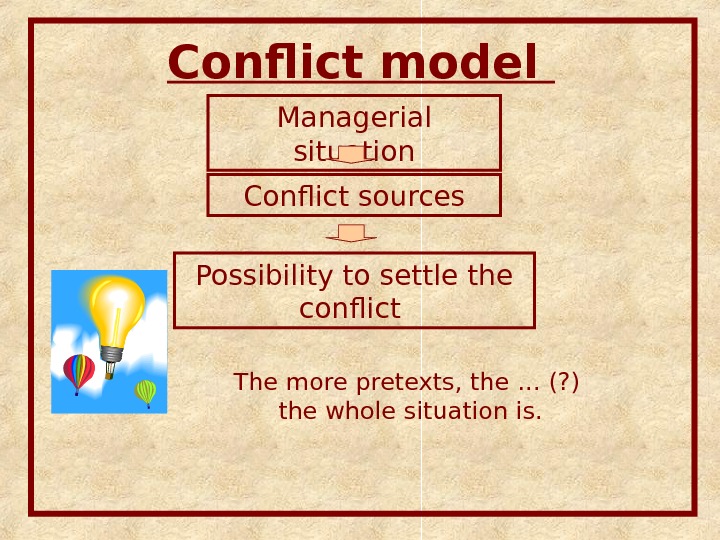

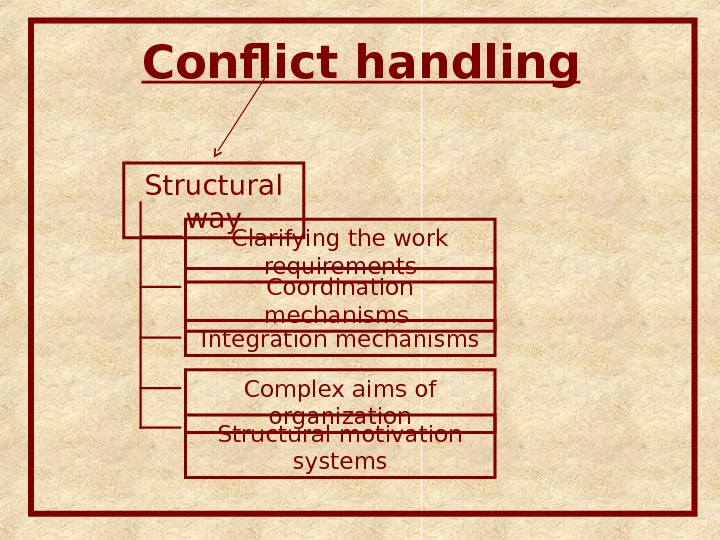

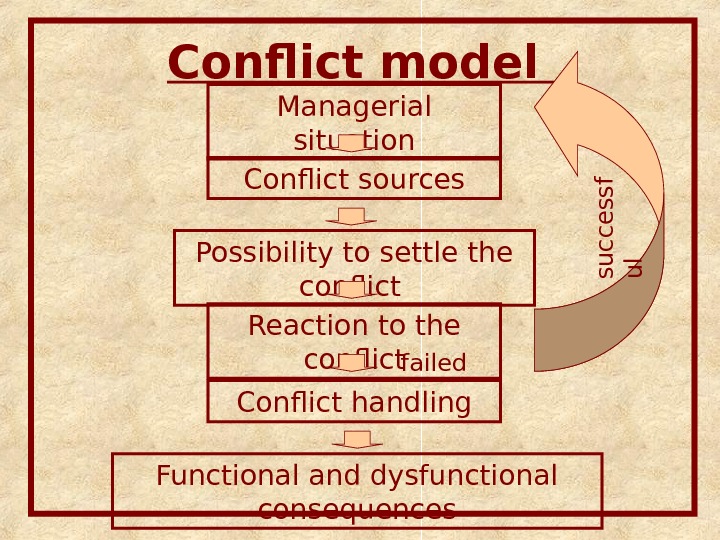

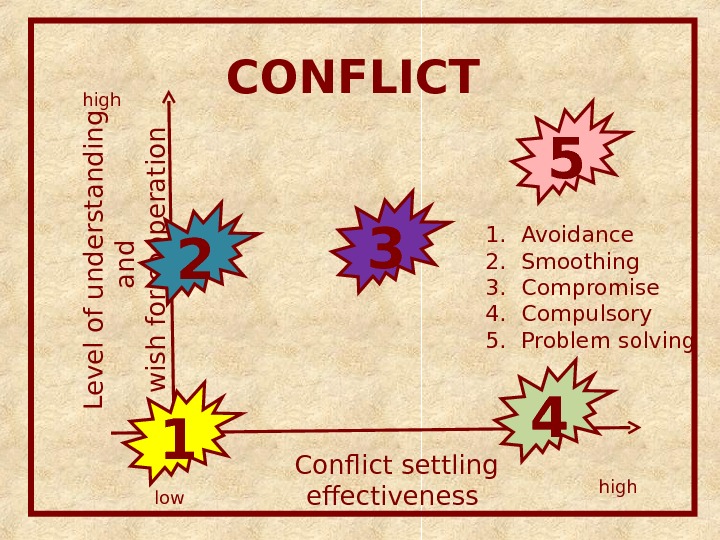
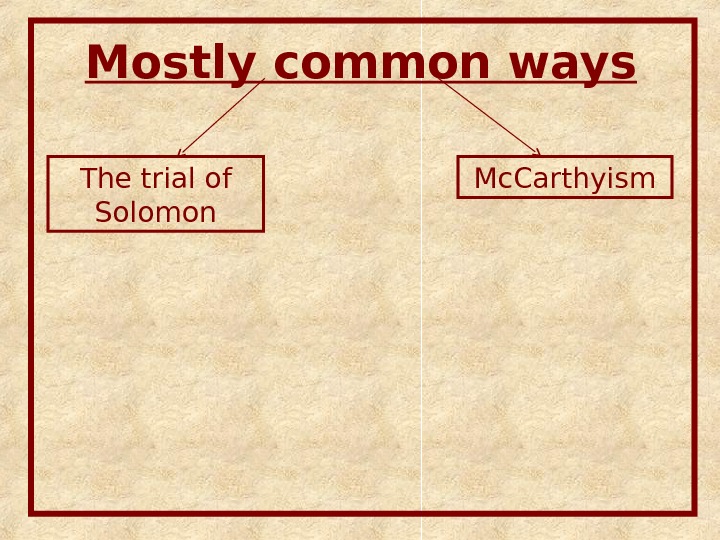



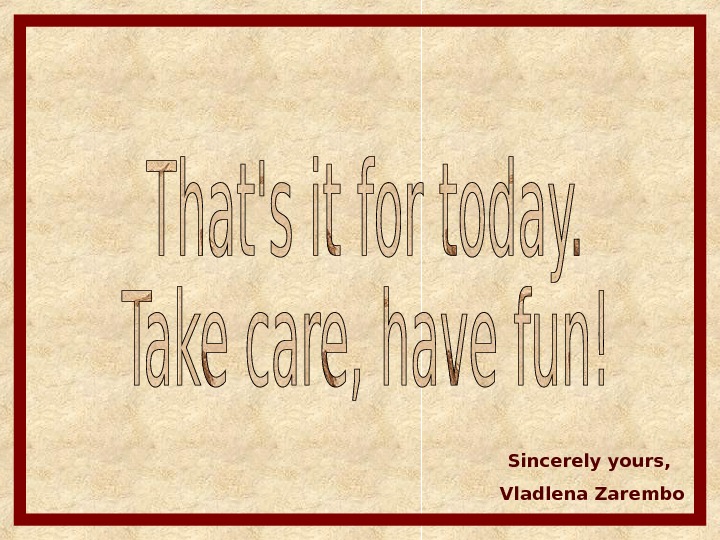
- Размер: 7.9 Mегабайта
- Количество слайдов: 21
Описание презентации Management CONFLICTS Friday 18 March 2016 Submitted by по слайдам
 Management CONFLICTS Friday 18 March 2016 Submitted by Dr. Vladlena E. Zarembo
Management CONFLICTS Friday 18 March 2016 Submitted by Dr. Vladlena E. Zarembo
 CONFLICT a serious disagreement or argument, typically a protracted one, or an incompatibility between two or more opinions, principles, or interests, or a condition in which a person experiences a clash of opposing wishes or needs
CONFLICT a serious disagreement or argument, typically a protracted one, or an incompatibility between two or more opinions, principles, or interests, or a condition in which a person experiences a clash of opposing wishes or needs
 CONFLICT Conflict situation Pretext + = Reasons for occurrence Consequence of inadequate communication development Different aims and ideas Disagreement between two or more parties Correlation of tasks Different life style and experiences
CONFLICT Conflict situation Pretext + = Reasons for occurrence Consequence of inadequate communication development Different aims and ideas Disagreement between two or more parties Correlation of tasks Different life style and experiences
 CONFLICT Benefits Losses Detection of various viewpoints Problems in control Aims disagreement Better management effectiveness Conflicts by types (consequences) functional dysfunction al
CONFLICT Benefits Losses Detection of various viewpoints Problems in control Aims disagreement Better management effectiveness Conflicts by types (consequences) functional dysfunction al
 CONFLICT Conflicts by types (by participants) interperson al between a person and a group (f. i. by not popular measures)long-term (conflict situation) short-term (conflict pretext)
CONFLICT Conflicts by types (by participants) interperson al between a person and a group (f. i. by not popular measures)long-term (conflict situation) short-term (conflict pretext)
 CONFLICT Conflicts by types (by participants) interperson al between a person and a group (f. i. by not popular measures)long-term (conflict situation) short-term (conflict pretext)
CONFLICT Conflicts by types (by participants) interperson al between a person and a group (f. i. by not popular measures)long-term (conflict situation) short-term (conflict pretext)
 CONFLICT Conflicts by types (by participants) interperson al between a person and a group (f. i. by not popular measures) between groups
CONFLICT Conflicts by types (by participants) interperson al between a person and a group (f. i. by not popular measures) between groups
 CONFLICT Conflicts by types (by participants) interperson al between a person and a group (f. i. by not popular measures) between groups inside of a person (role game)
CONFLICT Conflicts by types (by participants) interperson al between a person and a group (f. i. by not popular measures) between groups inside of a person (role game)
 Conflict model Managerial situation Conflict sources The more sources exist, the … (? ) the whole situation is.
Conflict model Managerial situation Conflict sources The more sources exist, the … (? ) the whole situation is.
 Conflict model Managerial situation Conflict sources Possibility to settle the conflict The more pretexts, the … (? ) the whole situation is.
Conflict model Managerial situation Conflict sources Possibility to settle the conflict The more pretexts, the … (? ) the whole situation is.
 Conflict model Managerial situation Conflict sources Possibility to settle the conflict Reaction to the conflicts u c c e s s f u l failed Conflict handling
Conflict model Managerial situation Conflict sources Possibility to settle the conflict Reaction to the conflicts u c c e s s f u l failed Conflict handling
 Conflict handling Structural way Clarifying the work requirements Coordination mechanisms Integration mechanisms Complex aims of organization Structural motivation systems
Conflict handling Structural way Clarifying the work requirements Coordination mechanisms Integration mechanisms Complex aims of organization Structural motivation systems
 Conflict handling Avoidance Smoothing Compulsion Compromise Problem solving and readiness to the other’s point of view. Interpersonal way. Structural way
Conflict handling Avoidance Smoothing Compulsion Compromise Problem solving and readiness to the other’s point of view. Interpersonal way. Structural way
 Conflict model Managerial situation Conflict sources Possibility to settle the conflict Reaction to the conflicts u c c e s s f u l failed Conflict handling Functional and dysfunctional consequences
Conflict model Managerial situation Conflict sources Possibility to settle the conflict Reaction to the conflicts u c c e s s f u l failed Conflict handling Functional and dysfunctional consequences
 CONFLICT Conflicts by types (consequences) functional dysfunction al The final result is acceptable for everyone More desire for the further cooperation Less working effectiveness No desire to compromise in the future “ the-other-party-being- an-enemy” idea Displacement of interest
CONFLICT Conflicts by types (consequences) functional dysfunction al The final result is acceptable for everyone More desire for the further cooperation Less working effectiveness No desire to compromise in the future “ the-other-party-being- an-enemy” idea Displacement of interest
 CONFLICT Conflict settling effectiveness L e v e l o f u n d e r s t a n d in g a n d w is h fo r c o o p e r a t io nlowhigh 1 2 3 4 5 1. Avoidance 2. Smoothing 3. Compromise 4. Compulsory 5. Problem solving
CONFLICT Conflict settling effectiveness L e v e l o f u n d e r s t a n d in g a n d w is h fo r c o o p e r a t io nlowhigh 1 2 3 4 5 1. Avoidance 2. Smoothing 3. Compromise 4. Compulsory 5. Problem solving
 Mostly common ways Mc. Carthyism. The trial of Solomon
Mostly common ways Mc. Carthyism. The trial of Solomon
 Why Conflicts Appear in an Organi zation Expectations of a Company about a Person Expectations of a Person about a Company
Why Conflicts Appear in an Organi zation Expectations of a Company about a Person Expectations of a Person about a Company
 5 Ways What a CEO Can Do Competitive style – based on power, means winner and looser in a conflict Dissociation style — lower level of persistence and no looking for co-operation Compromising style – temperate persistence and wish for co-operation Adaptation style – desire for co-operation and lower persistence on decision Co-operation style
5 Ways What a CEO Can Do Competitive style – based on power, means winner and looser in a conflict Dissociation style — lower level of persistence and no looking for co-operation Compromising style – temperate persistence and wish for co-operation Adaptation style – desire for co-operation and lower persistence on decision Co-operation style
 Styles of the Conflict Handling S e lf — in t e r e s t lowhigh Interest to others. Power (winner — looser) Co-operation (winner — winner) Avoidance (looser — looser) Other-Side Approach (looser — winner)Compromise (no win – no win)
Styles of the Conflict Handling S e lf — in t e r e s t lowhigh Interest to others. Power (winner — looser) Co-operation (winner — winner) Avoidance (looser — looser) Other-Side Approach (looser — winner)Compromise (no win – no win)
 Sincerely yours, Vladlena Zarembo
Sincerely yours, Vladlena Zarembo

